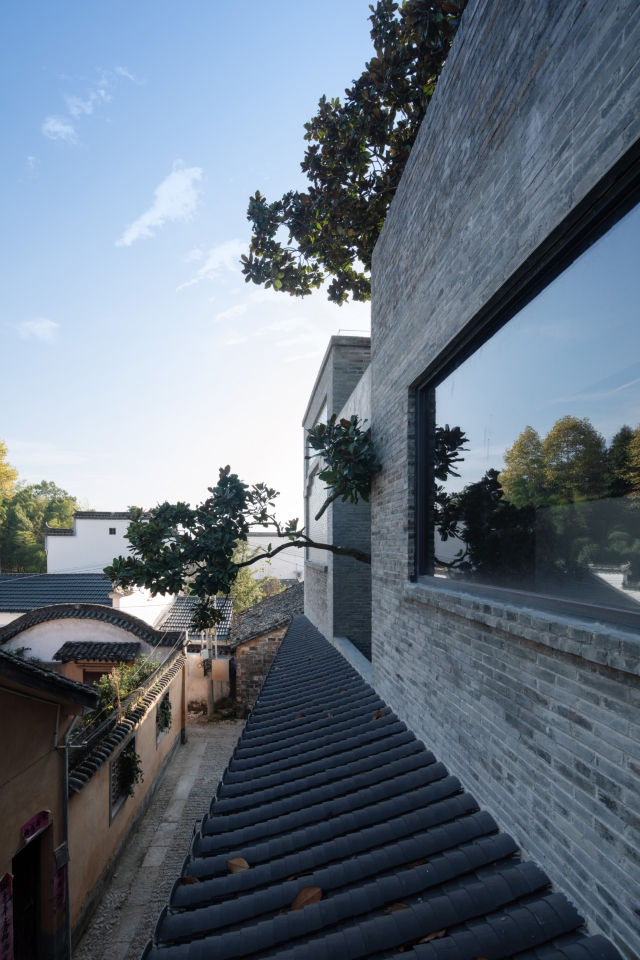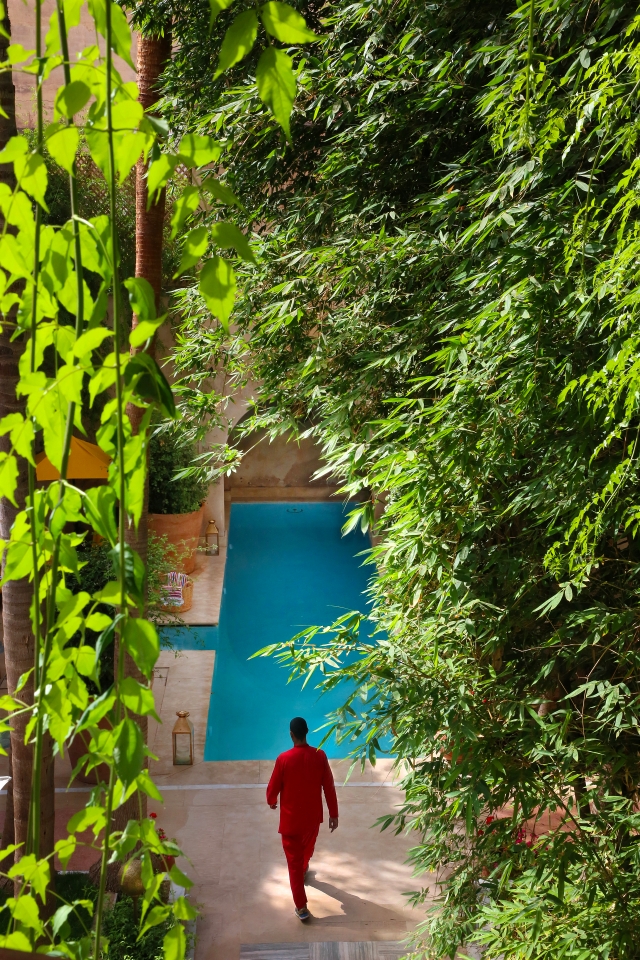Just one hour south of Mexico City, the town of Tepoztlán is located within a valley with a pleasant, temperate climate and nestled amidst three rock formations, including El Tepozteco. These geographic and climatic conditions produce constant and abundant vegetation; it brims with a diversity of flora, and shelters both mountain and subtropical species within the same space. Visitors who explore the town find a unique and unrepeatable experience filled with hidden mystical and spiritual corners, a mixture of traditional and vernacular architecture and narrow cobblestone streets with low facades.
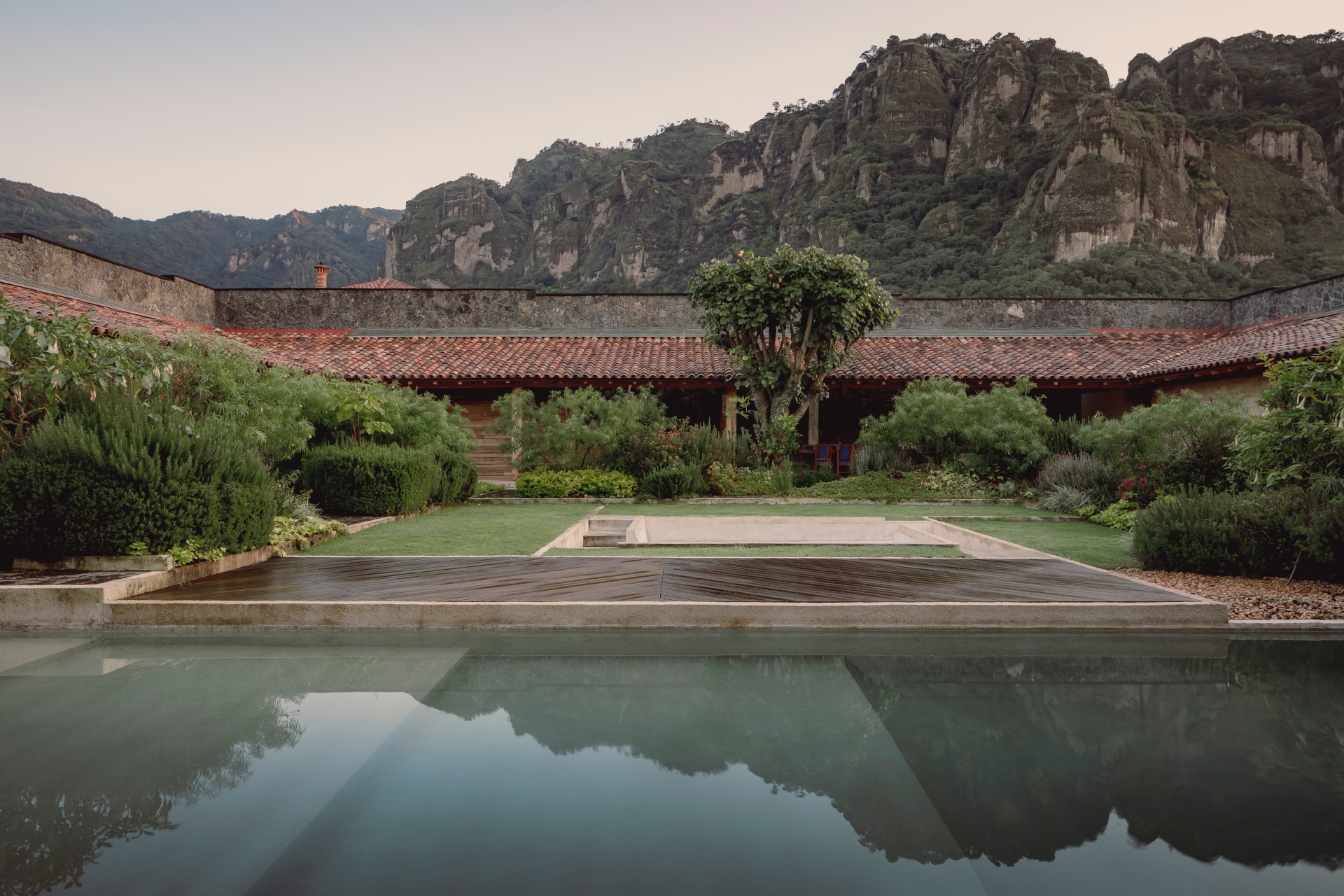
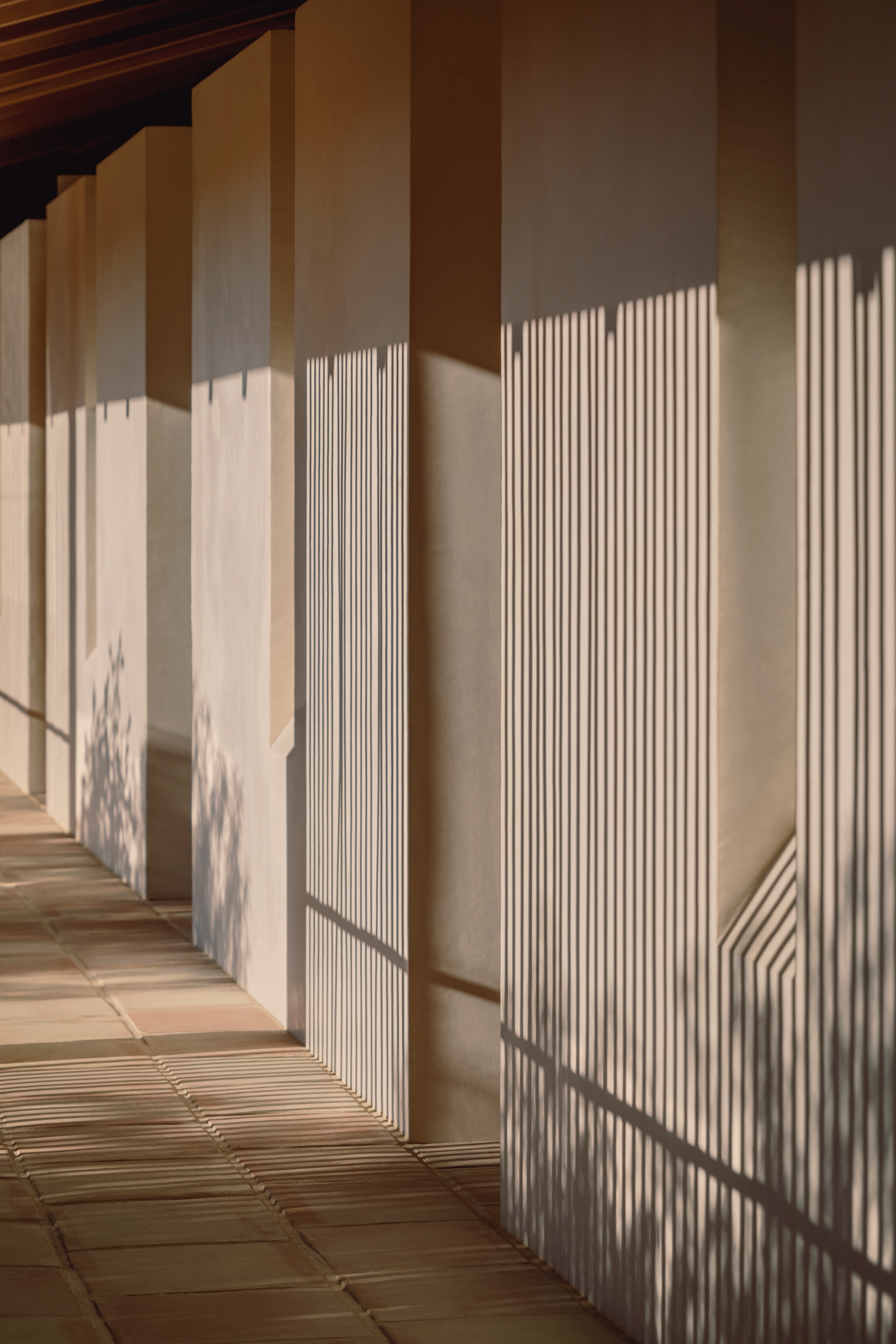
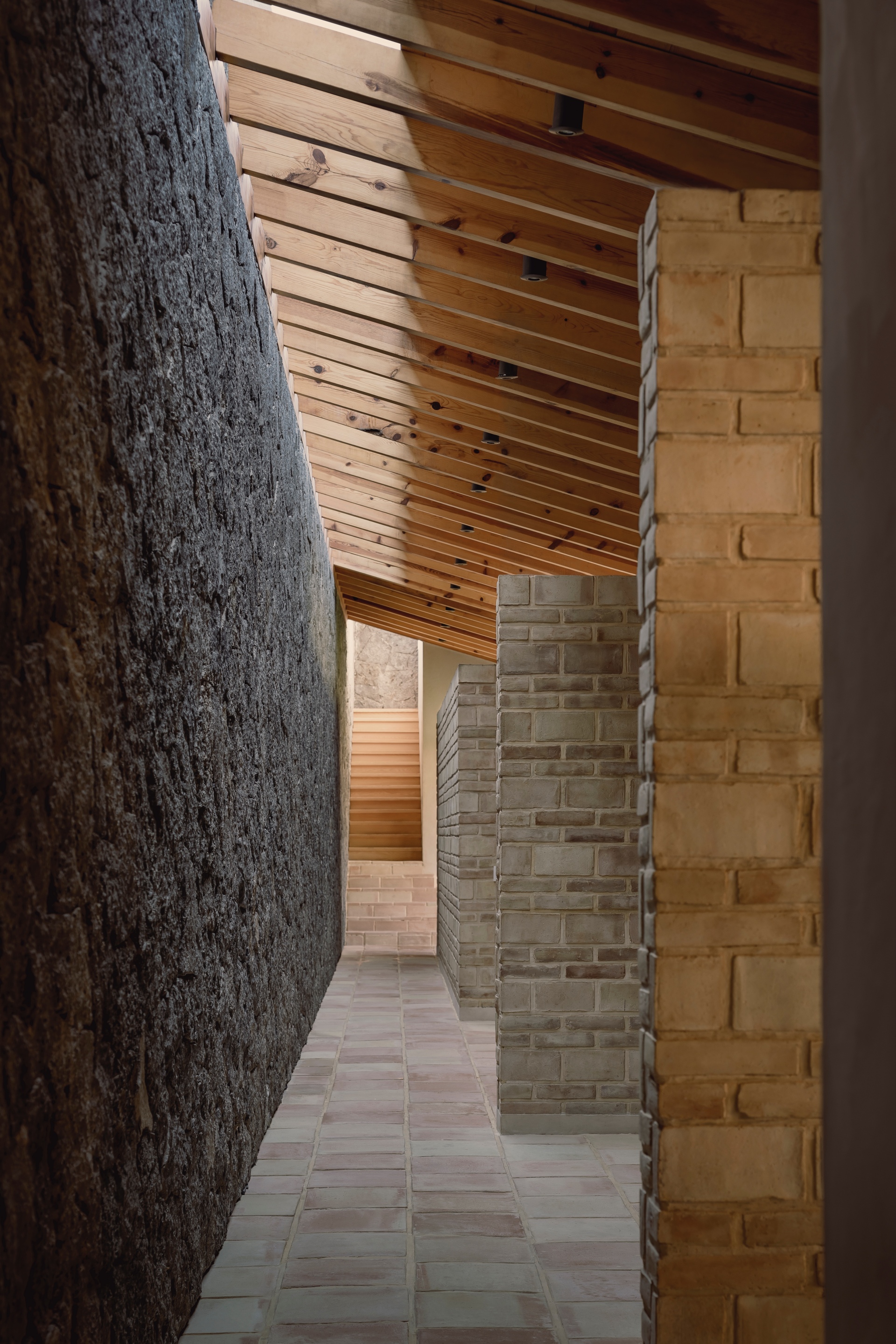
With this array of characteristics in mind, the prerogative of contributing to the architectural legacy of this valley instills a responsibility to evoke its mystical nature within the home, ensuring that the essence of Tepoztlán is always present. Conceived by Práctica Arqutiectura, the decision to build a weekend home in Tepoztlán reflects the sensitivity of the client ́s desire for their quiet moments and their empathy toward the town. They seek belonging, not only to be able to disconnect from the city, but also because the architectural character of the town is reflected within their home. Currently a weekend residence for both the couple and their children, in the future it will become a retirement home. The areas must therefore satisfy a wide range of uses and be strategically arranged so as not to interrupt or limit other activities.
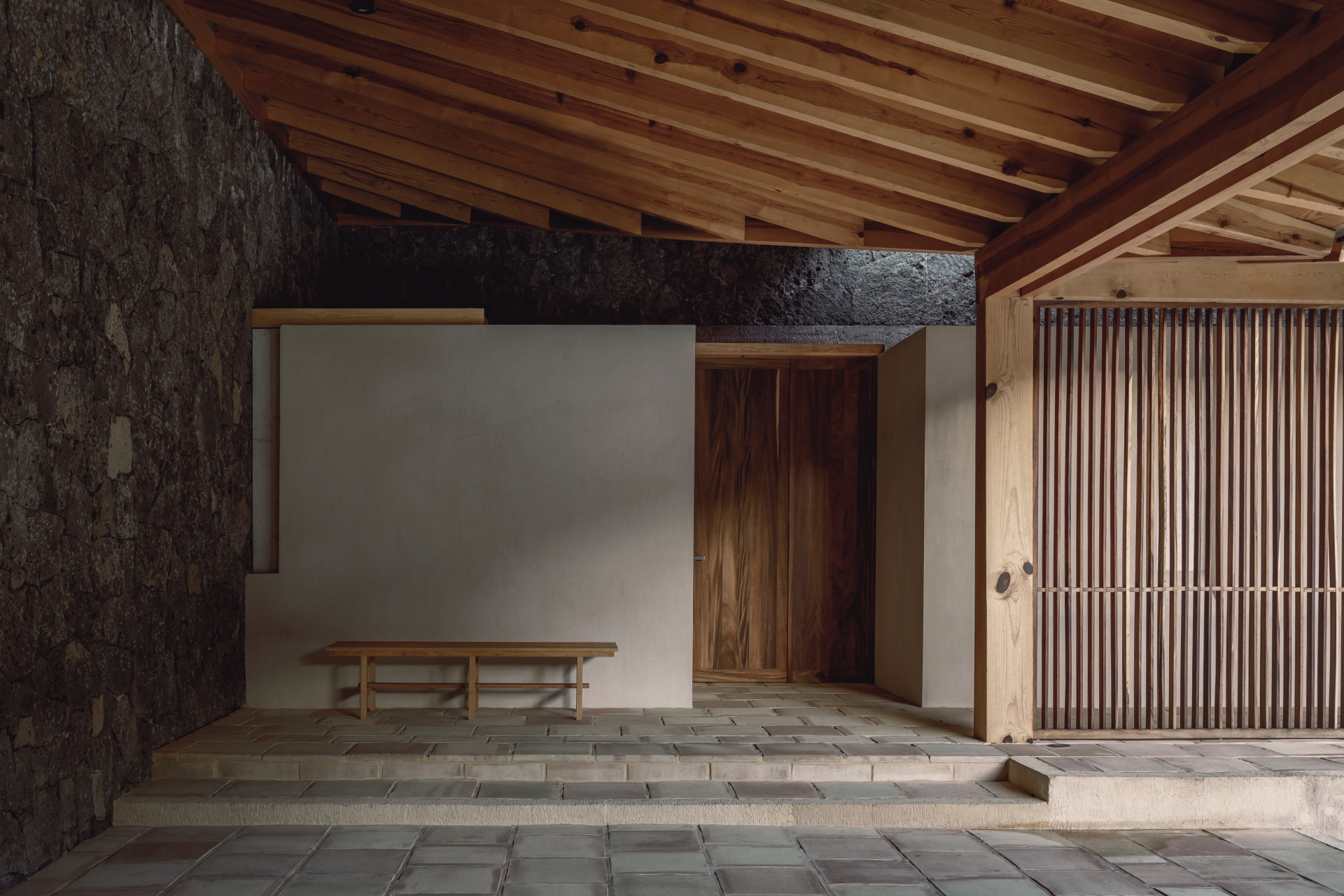
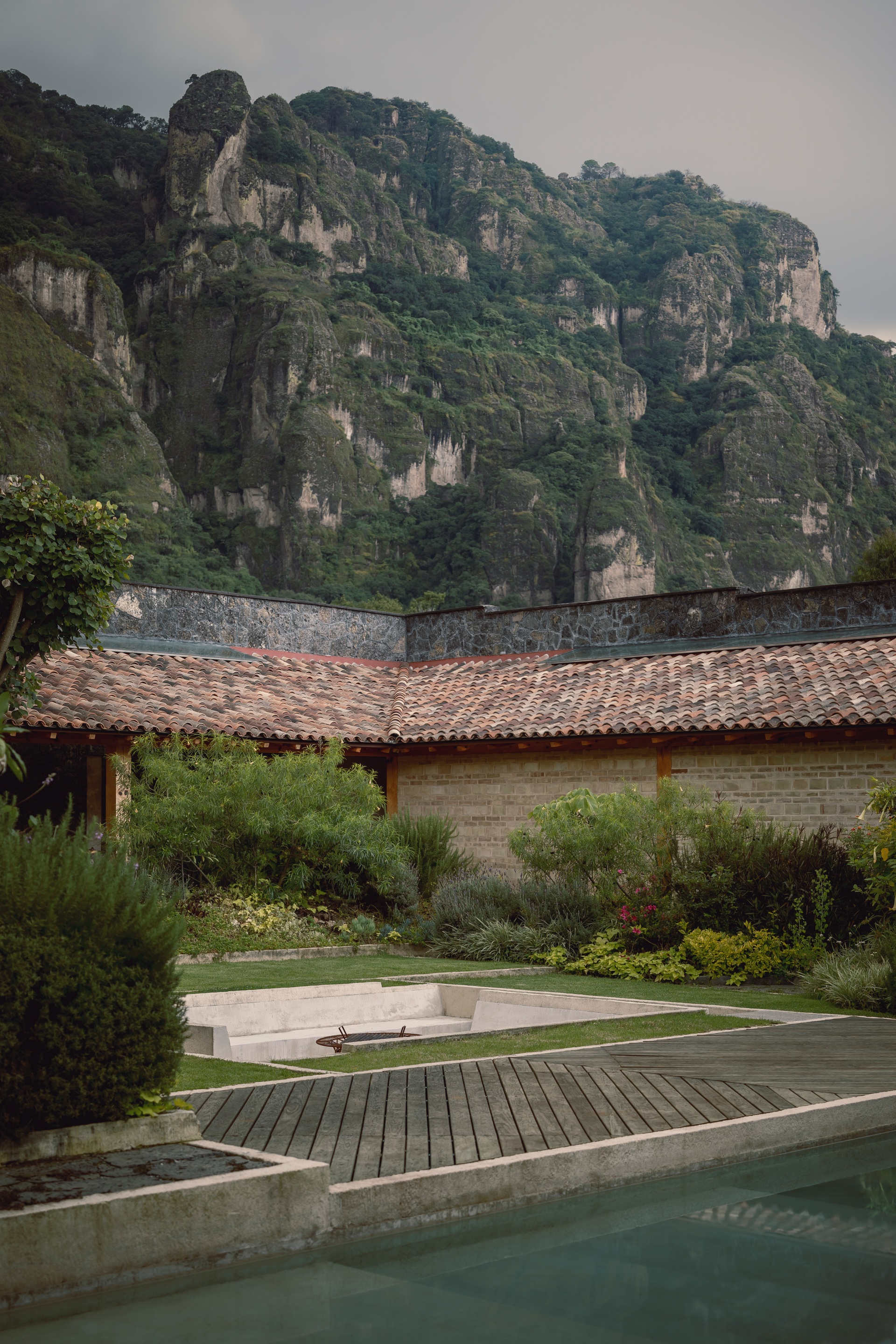
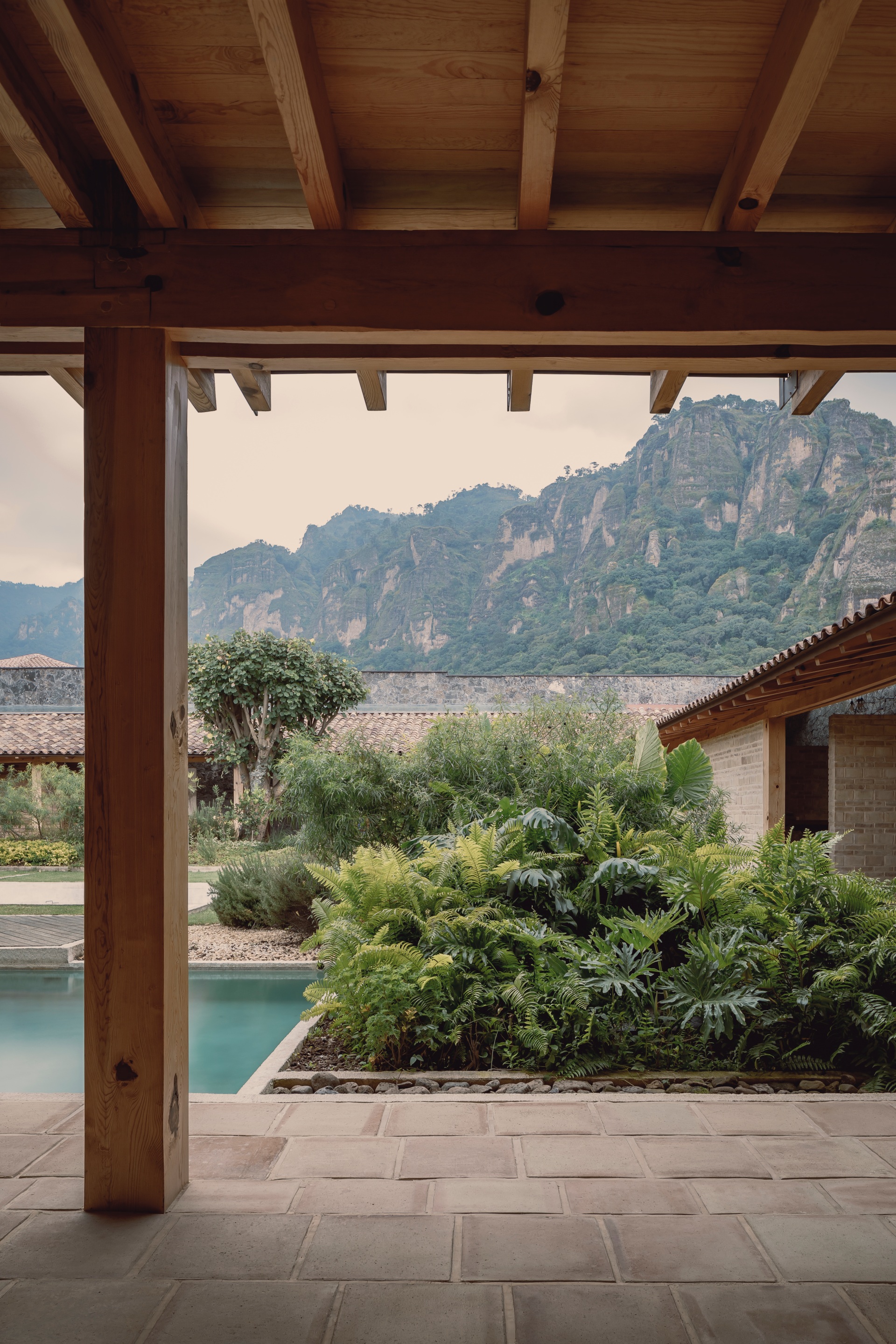
This corner lot, boasting 1270 m2, is located within a gated community in a residential area. Its location provides a privileged view of El Tepozteco with orientation toward the north and an open sensation toward the west, east and south. It is flanked by homes in various stages of development; however, their ostentatiousness in terms of size, shape and language break the line with the natural landscape, making this home unique. In this sense, the project begins from a place of opposition to this jarring set of proposals to reclaim the elements of the town and its environment.
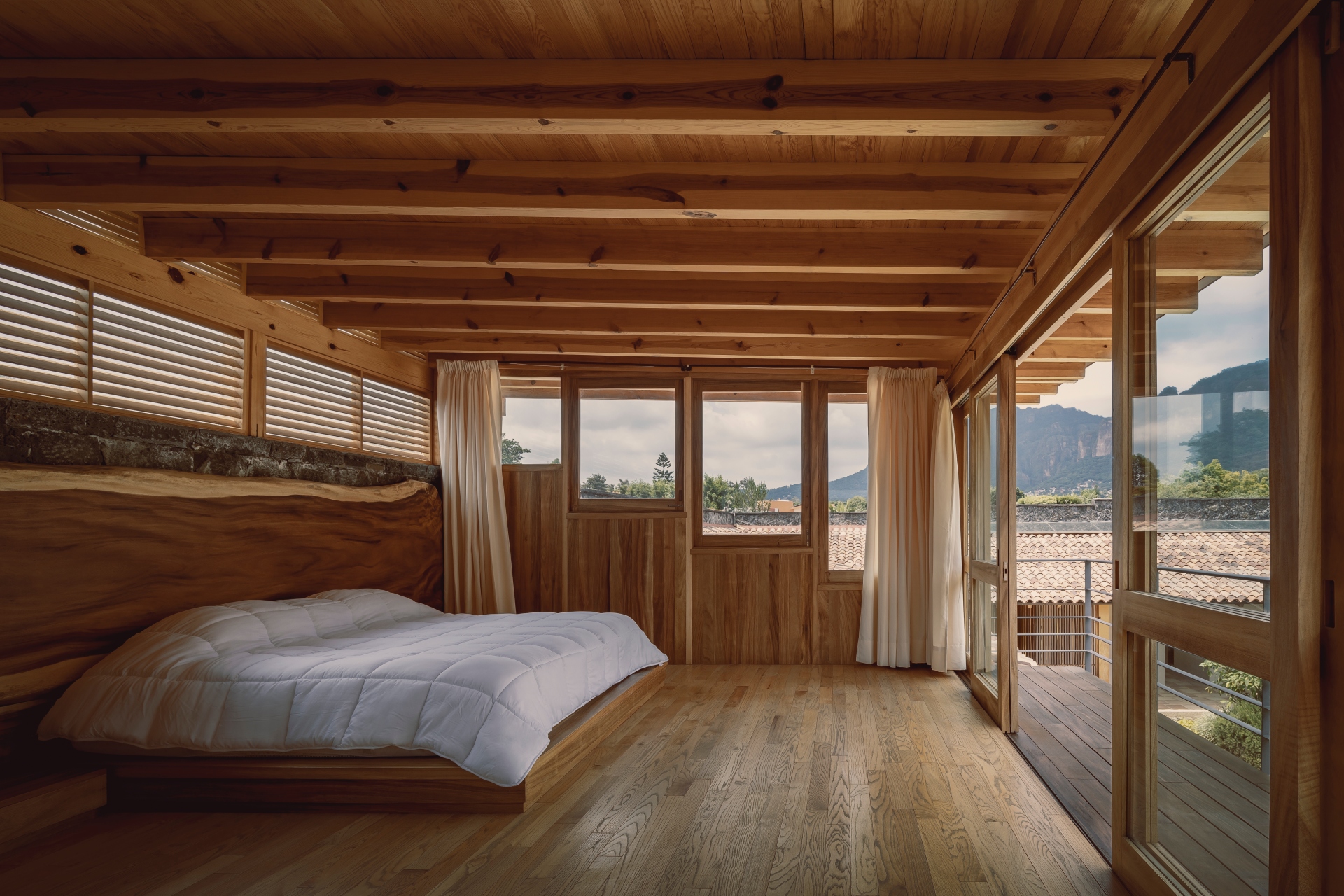
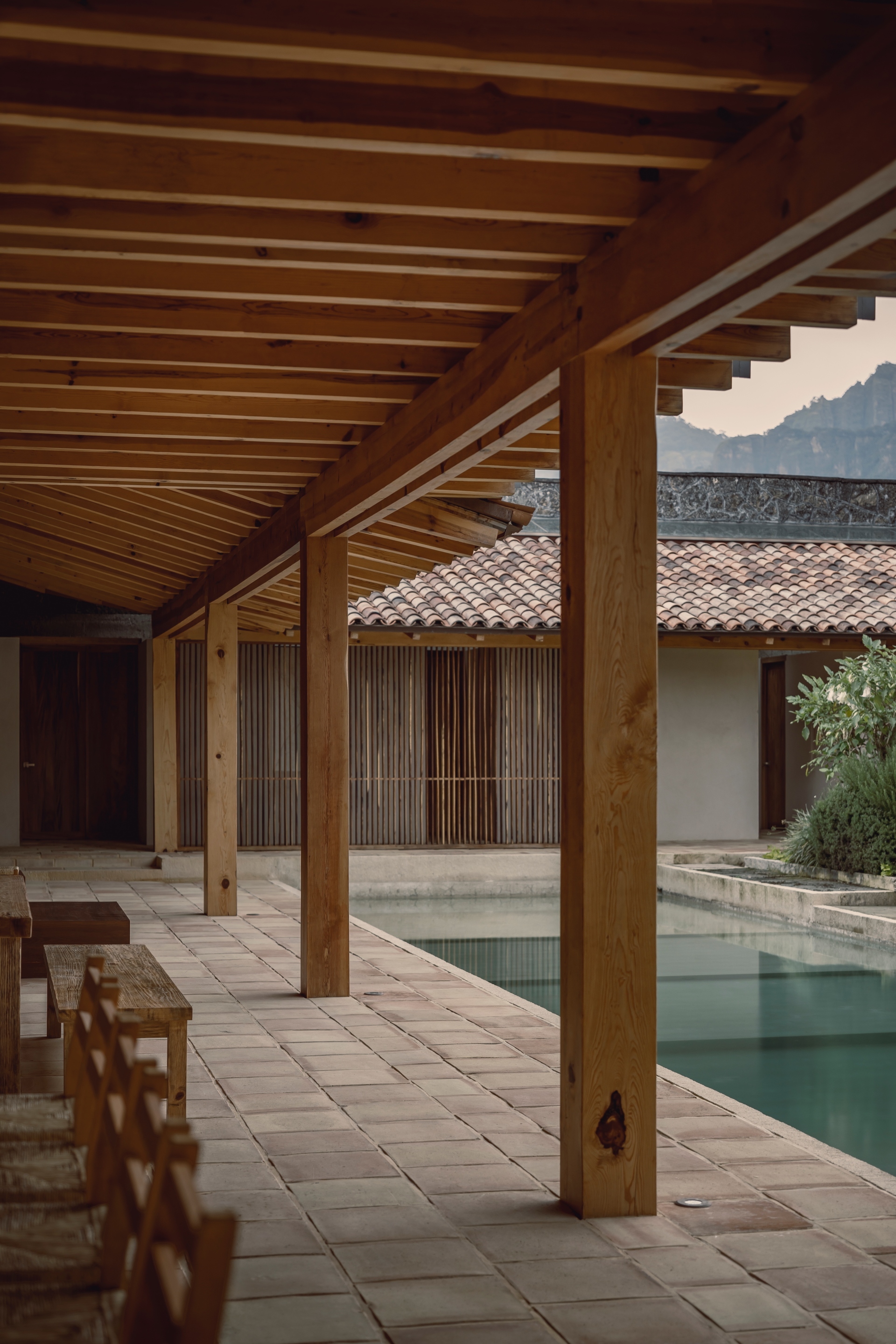
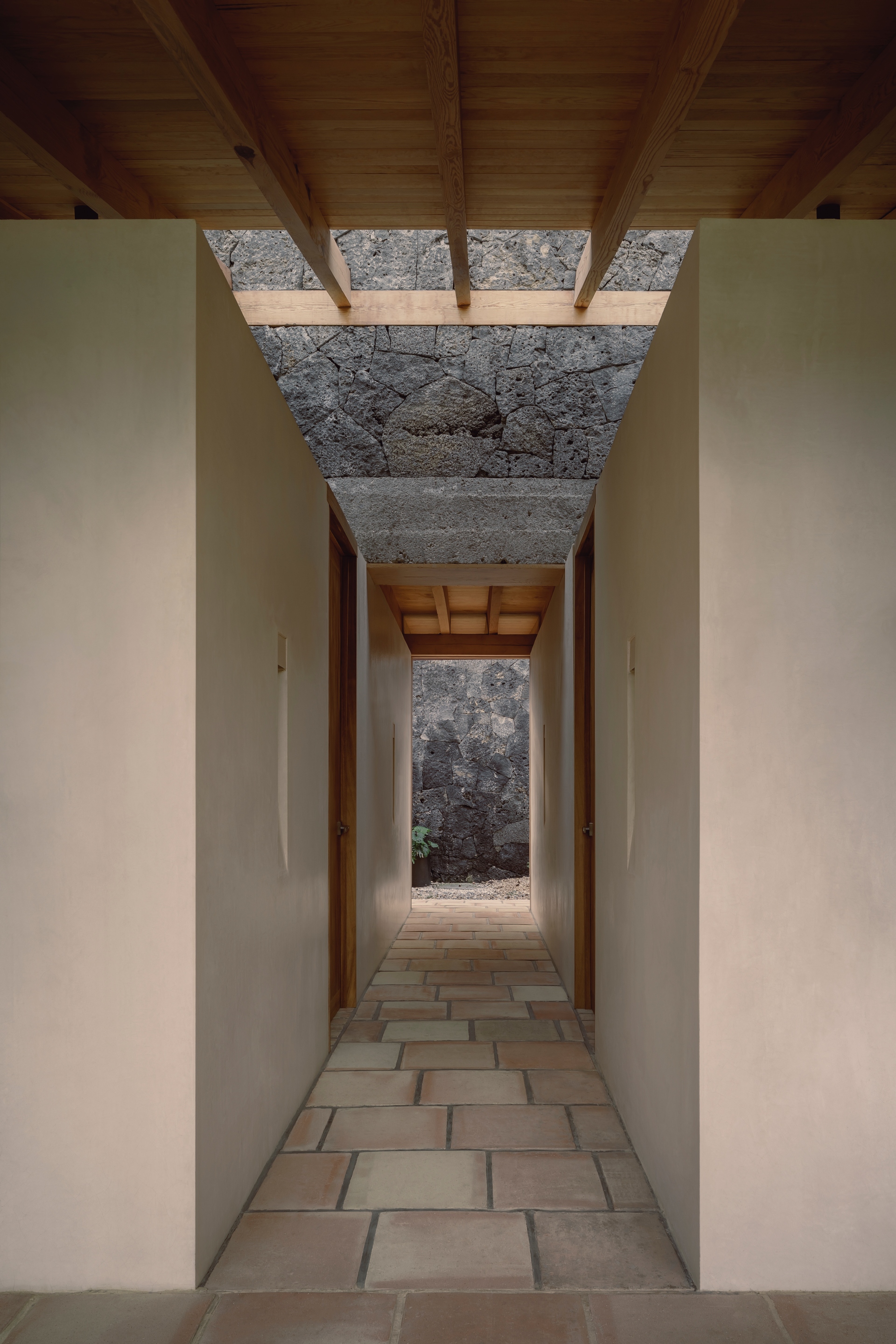
Tepoztlán is a place that is lived inwardly; its secrets are discovered within its patios and gardens, and inside its buildings. The beauty of its street facades is rooted in their sobriety and serenity, actively inviting the viewer to enter. With this intention, the home’s exterior is sober and serene, in silent respect for its environment, and it preserves its magic and mystery for those who enter within. La Hacienda Jardín reflects on the typology of the weekend house and the specificities it requires in a given context by reinterpreting the concept of the hacienda. The architectural program questions the area’s predominant practice of first fencing off a property and then inserting a building and landscaping the rest. This project does the opposite; it becomes a roofed wall open to the elements that contains a garden of endemic vegetation in its center. In this way, the large courtyard becomes the diaphragm that regulates the interactions, deconstructing the hermetic division between public and private spaces. The roof over the courtyard frames the Tepozteco mountain, allowing users to maintain an intimate relationship with their environment from any location.
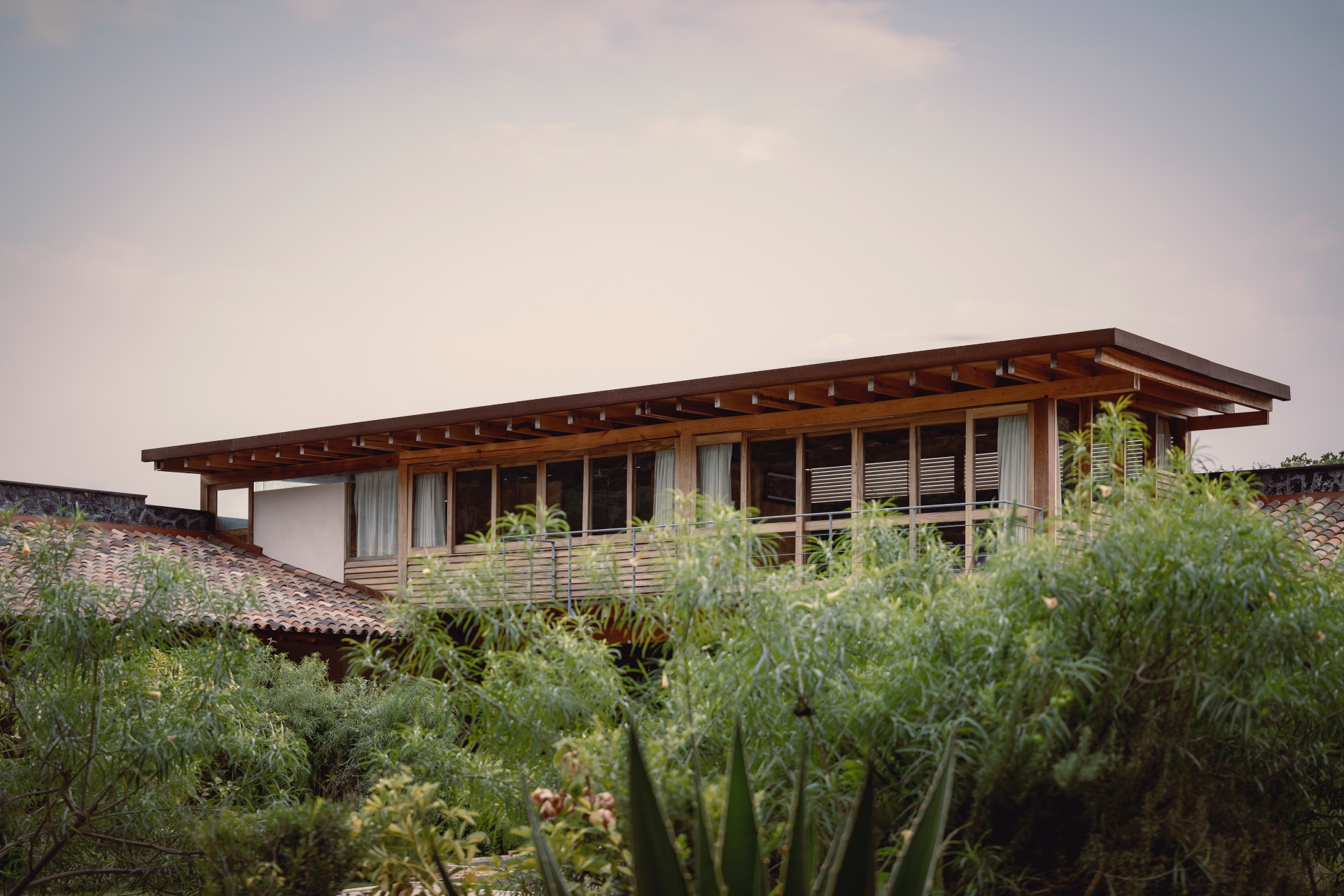
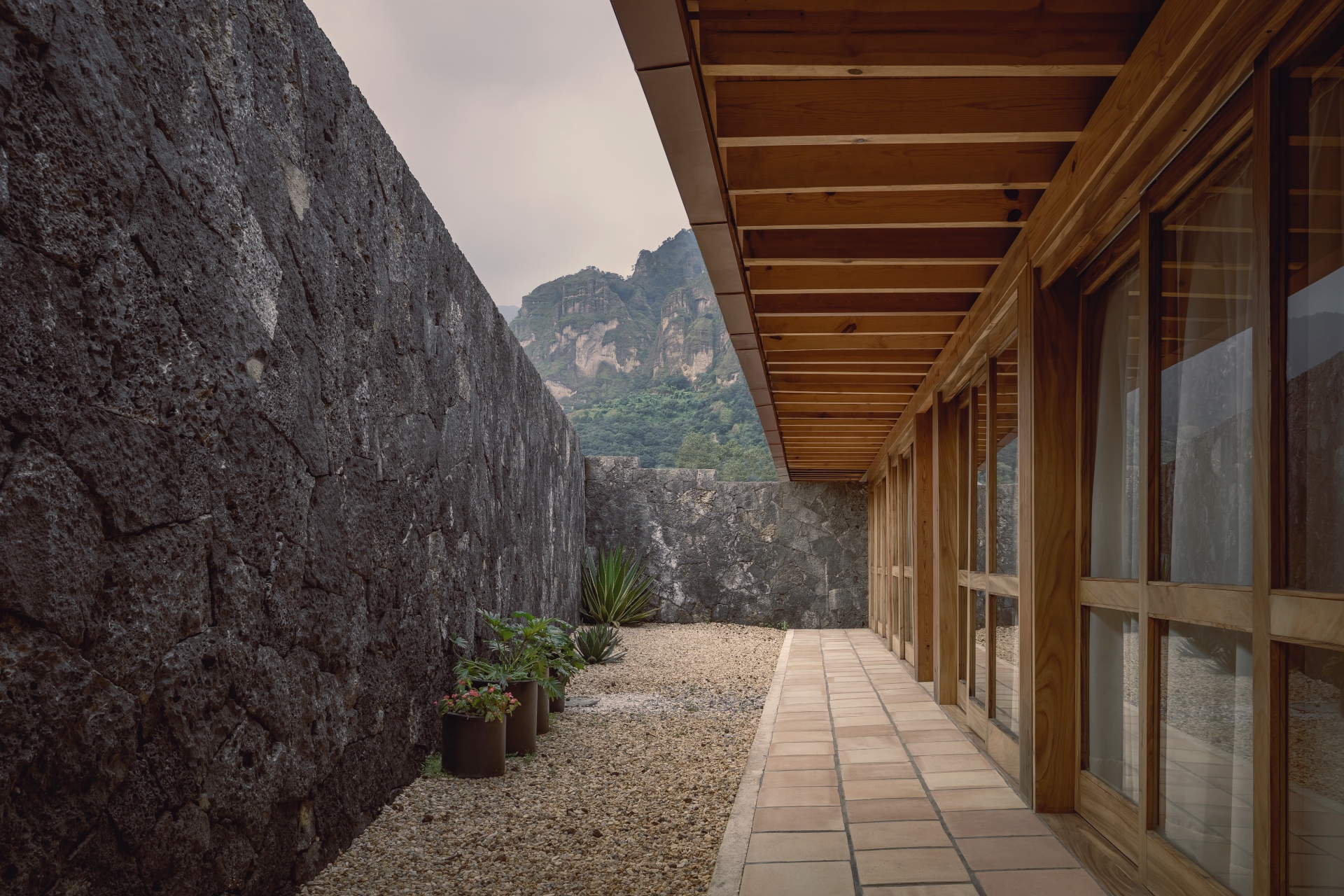
The materials create a direct dialogue with the site, the land, the climate, and the landscape. The perimeter wall of Texcal volcanic stone contains and shelters all the built spaces. The main structure uses Durango pine, which becomes the principal interior material used for the beams and poles; huanacaxtle wood is used in the latticework and finishes. The terracotta tile floors, tile roof and brick and chukum walls create a chromatic palette that responds with sensitivity to the specific use of each area.
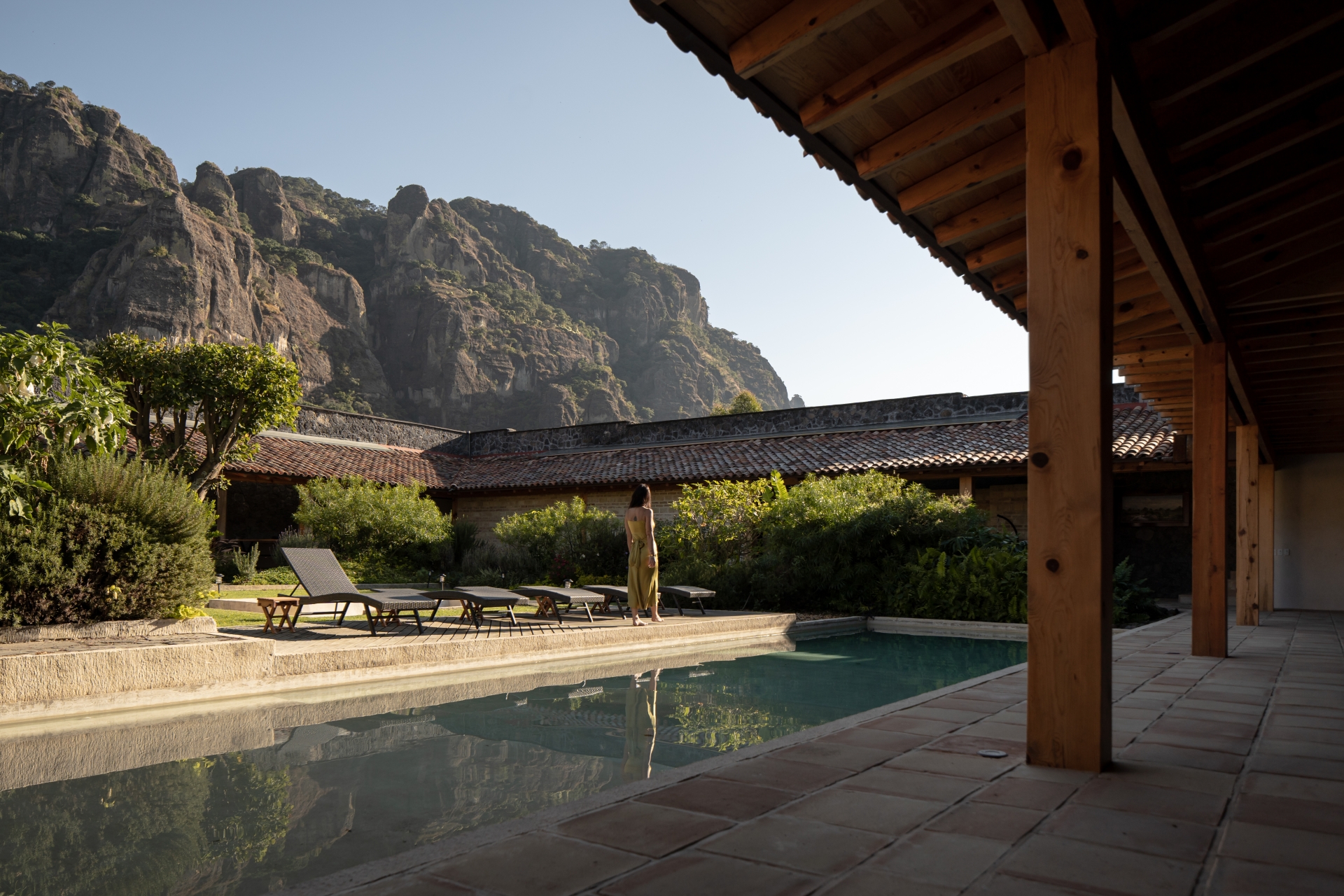
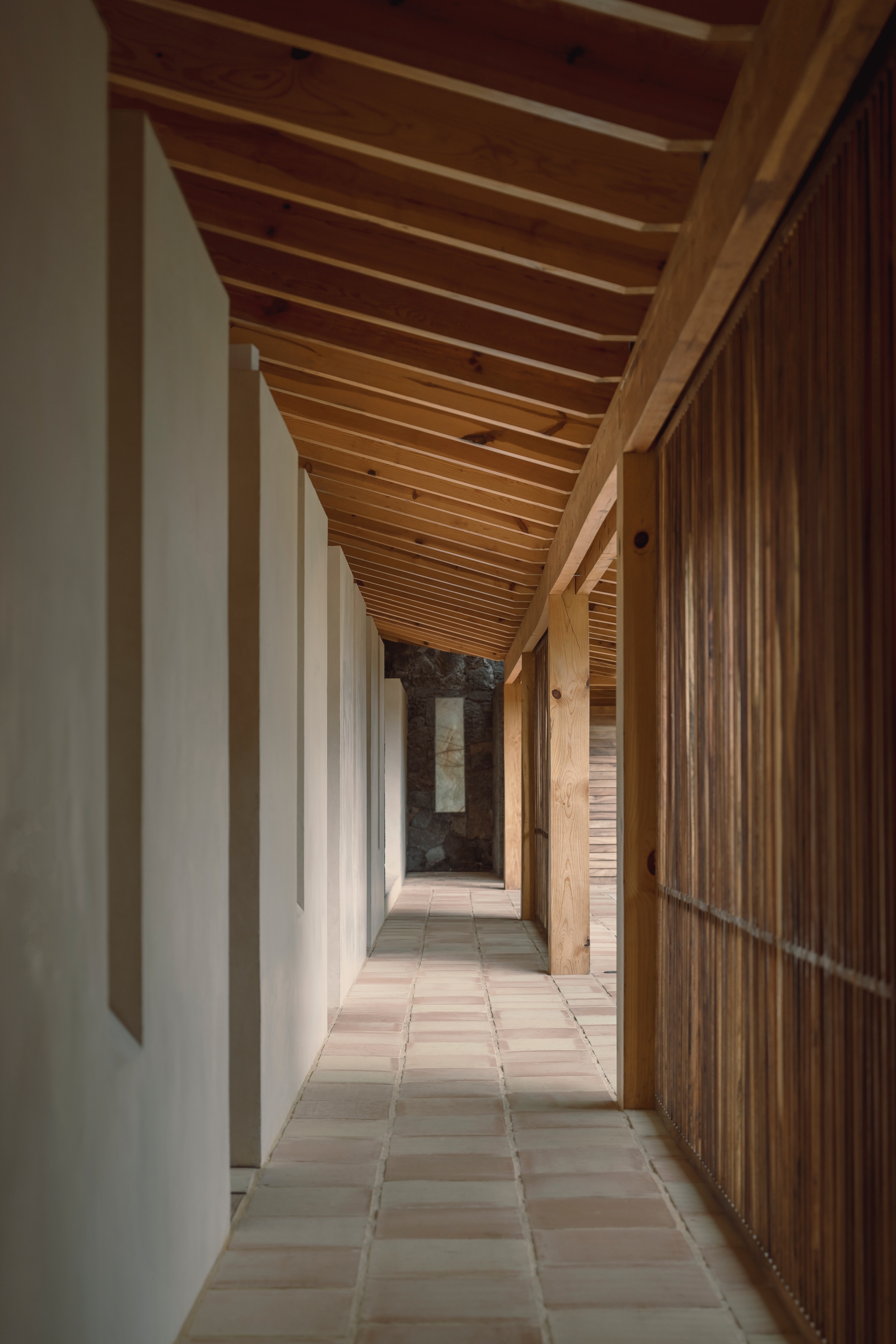
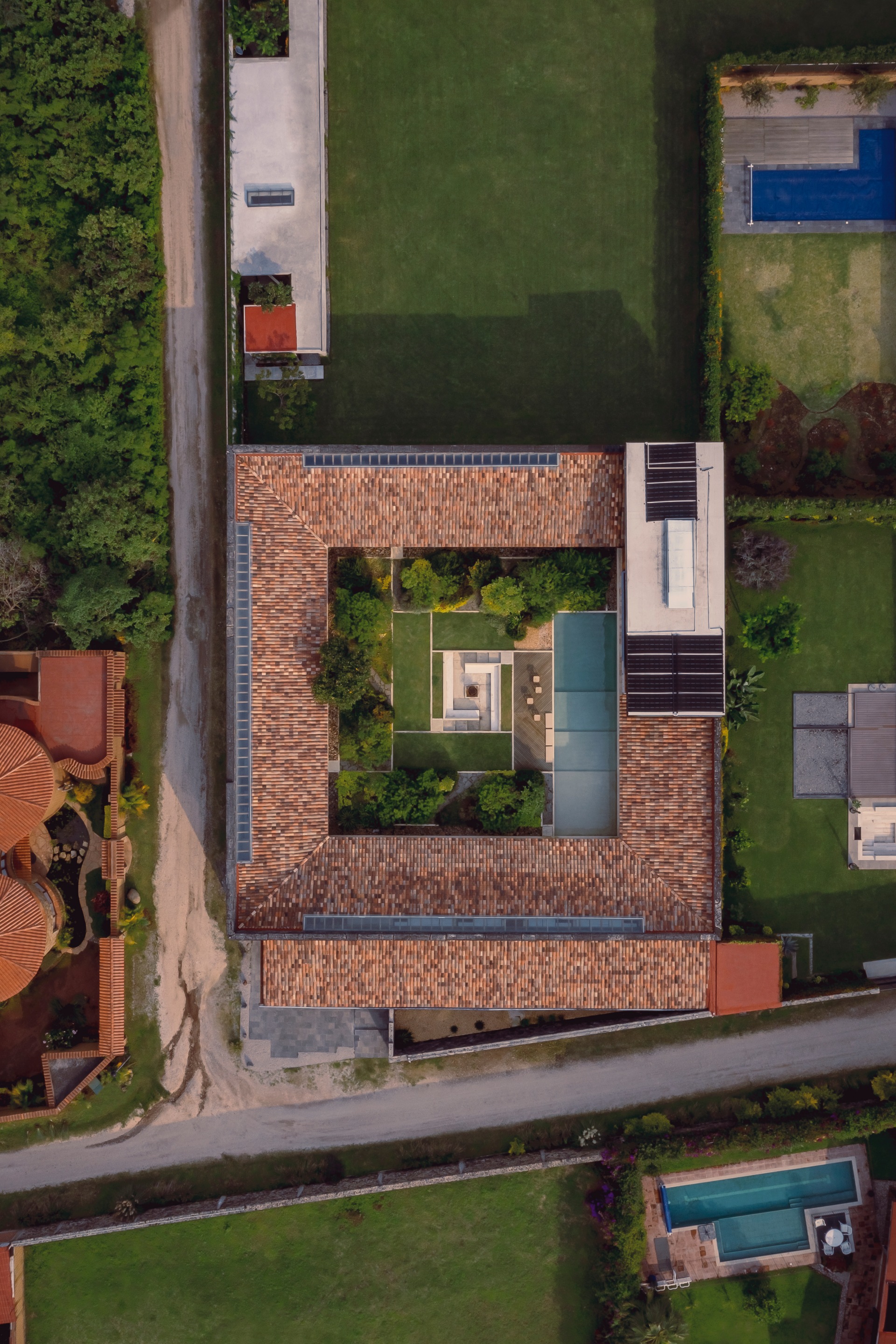
Constituted by these two coordinating elements, the central courtyard and peripheral volume, the design displays the persistent connection between them. The main access on the corner, conscious of its placement, harmoniously resolves the relationship with the immediate context, opening toward it. The distribution of the perimeter wall and the definition of the layout on the ground plan unfold the walls in the form of staples and lattices that produce a play of light and shadow. Their disconnection from the roof produces a sense of lightness, and the pergolas bathe the area with homogeneous interior light. The internal paths evoke different sensory experiences depending on the chosen direction.
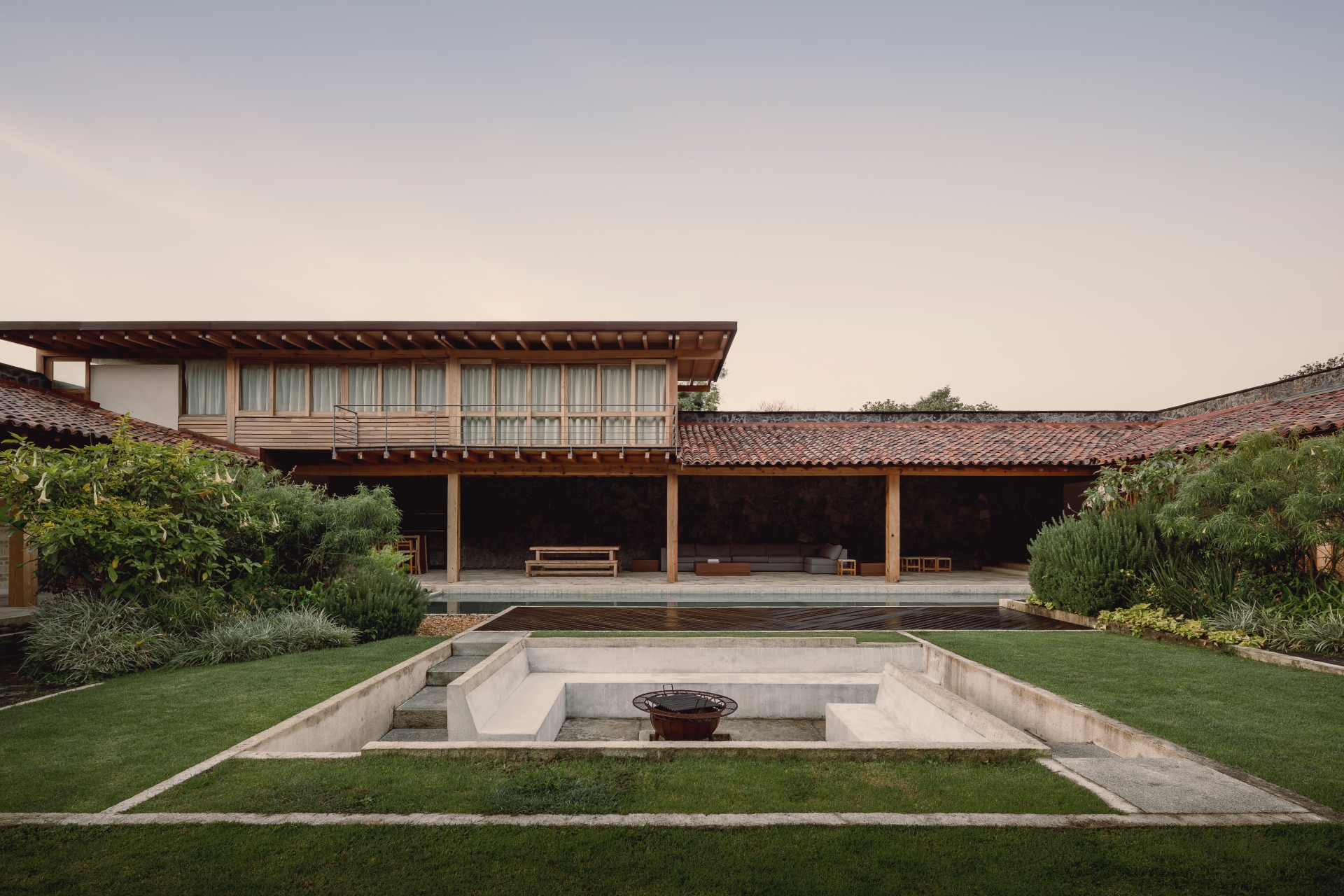
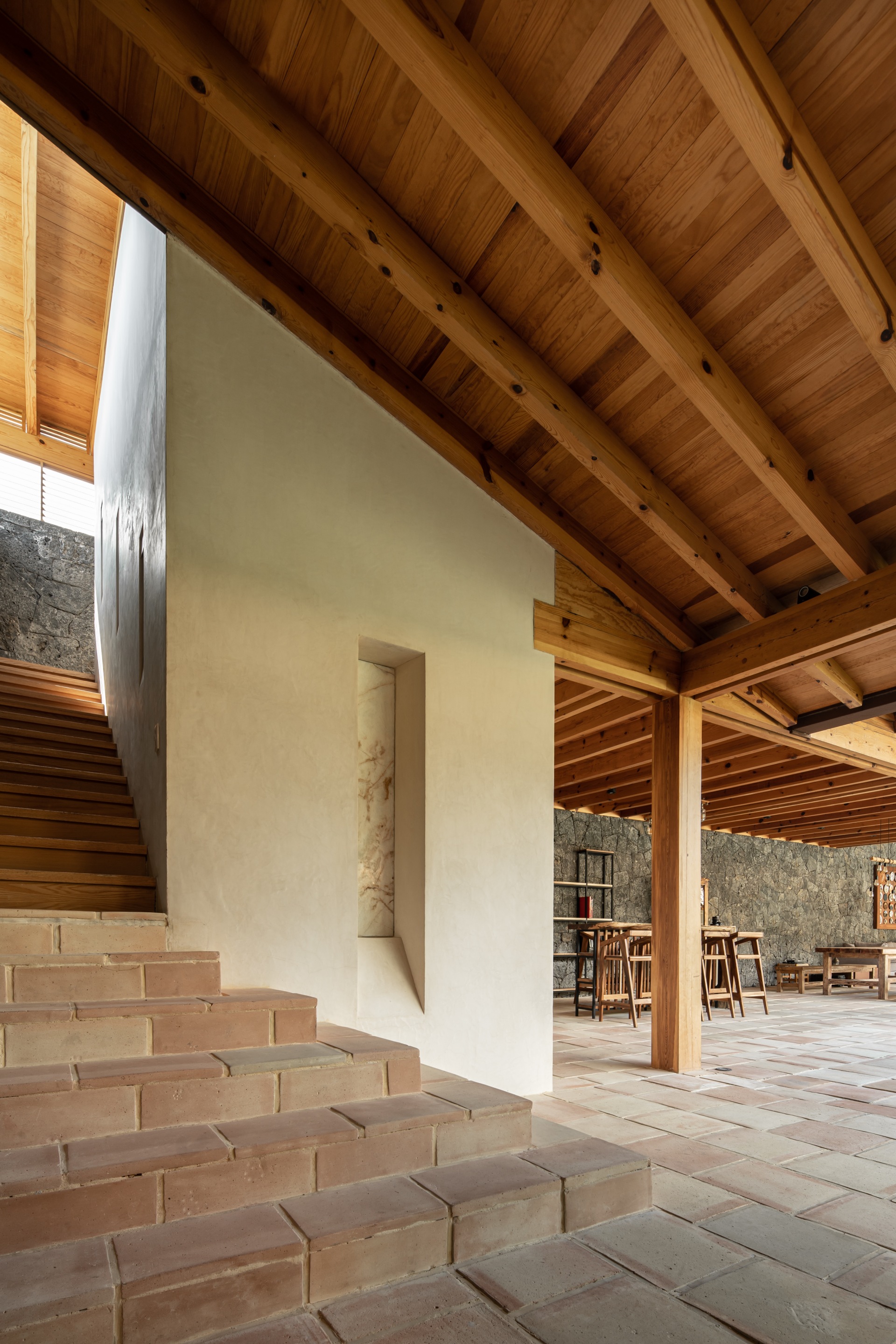
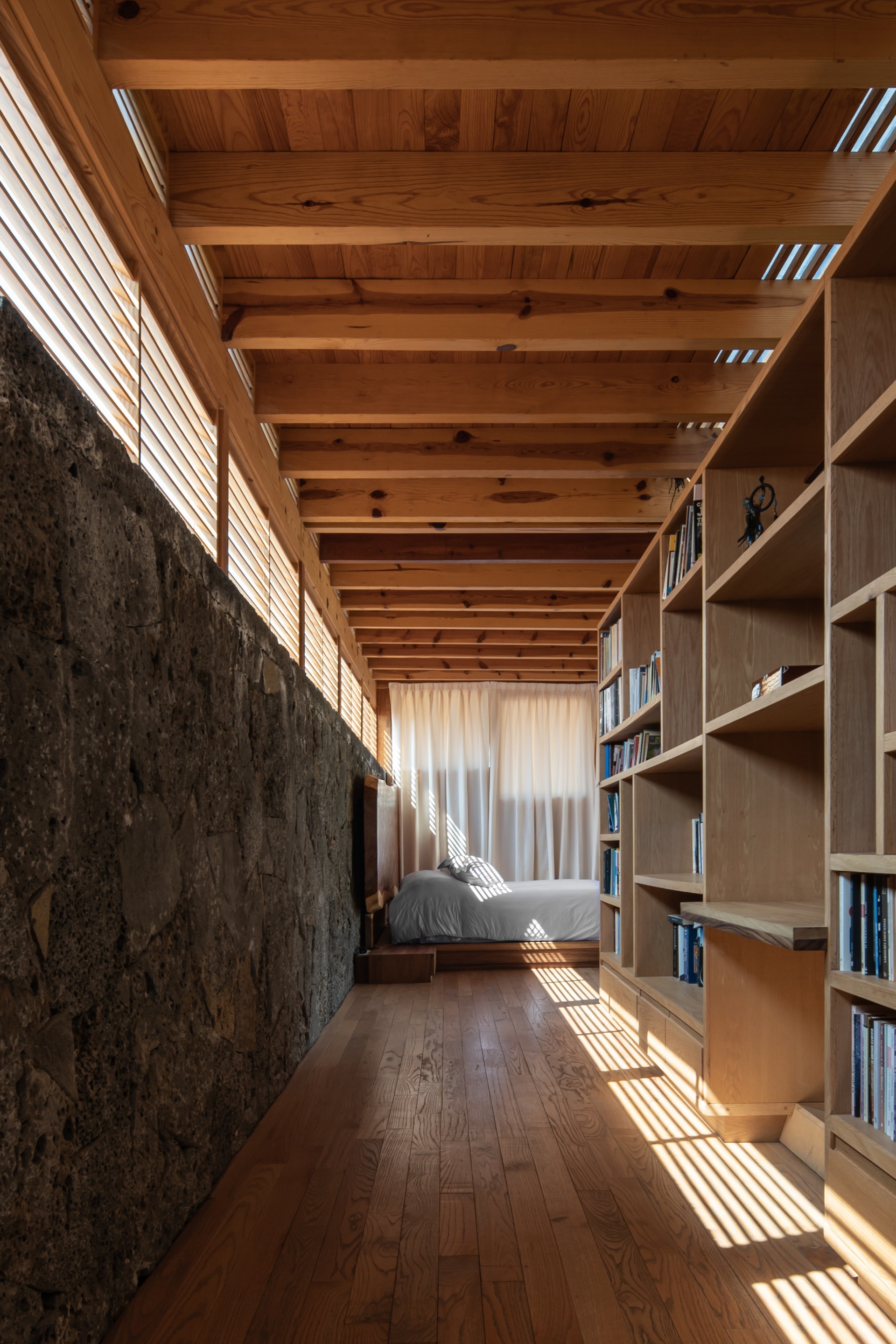
Immediately to the right of the entrance are the secondary rooms that face a private garden, providing a distinct experience from that of the central garden. In the continuity of this passage along the perimeter, a series of terraces and common rooms meditate on the surrounding nature and culminate in the access to the primary room on the upper floor, a contemplative element of La Hacienda Jardín and El Tepozteco. Returning to the first floor, the adjoining segment configures the public spaces into semi-enclosed rooms, proposing an intimacy that is different from the rest. In the last section, connected to the main door, consists of the kitchen, dining room and living room; arranged to produce a balance between the different elements.
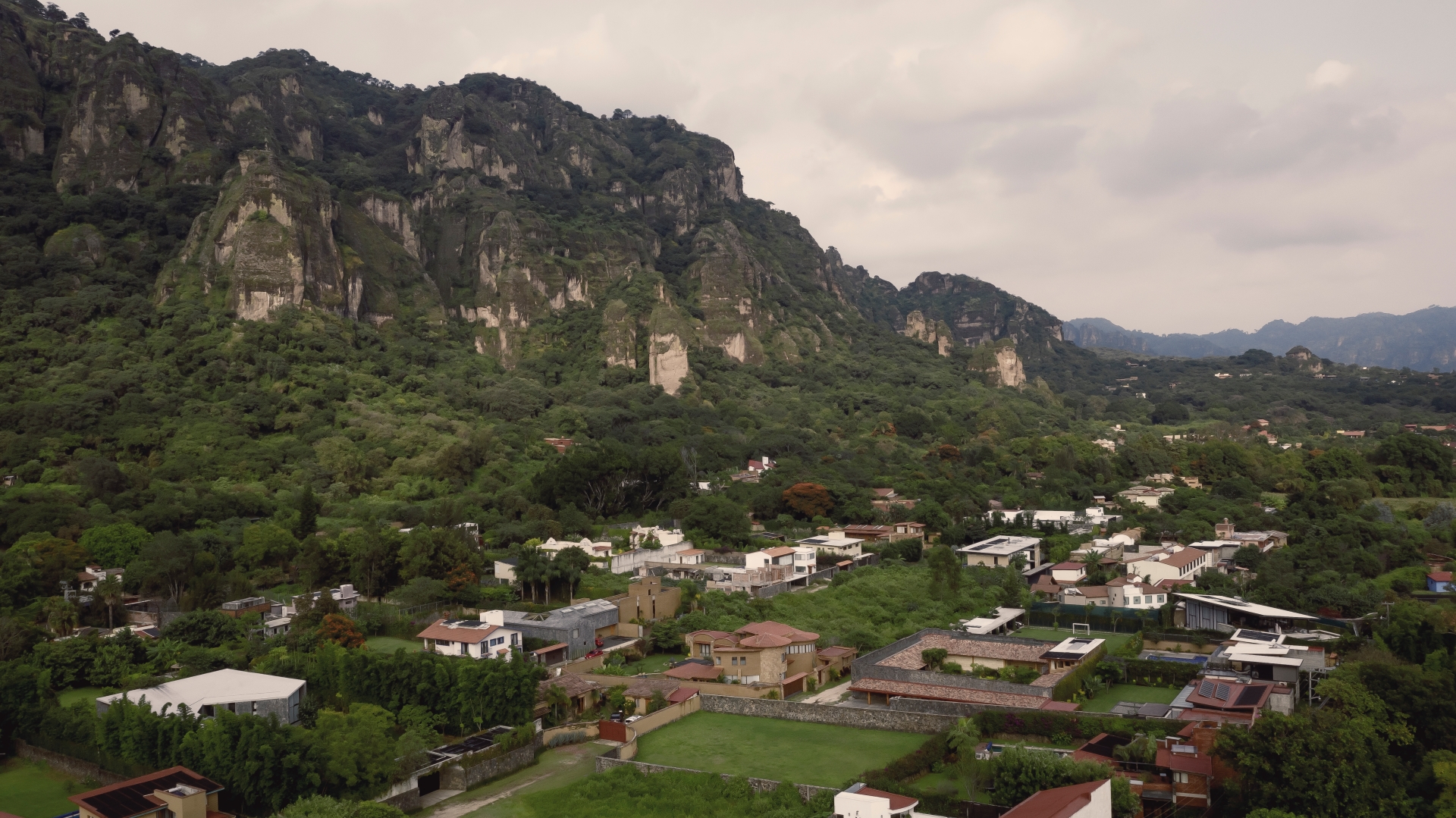
Finally, the home contains both active and passive solutions in terms of sustainability. On the one hand, the project features electrical systems that draw on solar panels and heaters, drainage with a controlled septic tank, irrigation from water catchment systems and natural absorption wells. On the other hand, it curates the entry and control of natural light and ventilation to all its spaces, while the vegetation helps maintain a stable internal environment, providing a pleasant microclimate. La Hacienda Jardín offers a classic Mexican space, reinterpreted in a modern role that combines form and function in a contextual dialogue. The house manifests the posture that is taken toward the act of dwelling. In an area where cell phone service is very low, electricity is intermittent and water is scarce during the dry season, the project emphasizes and fosters the accessibility of what has always been there; the mountain, nature, and calm, experienced through its landscapes, layout, materials, programmatic boundaries, and typology.






